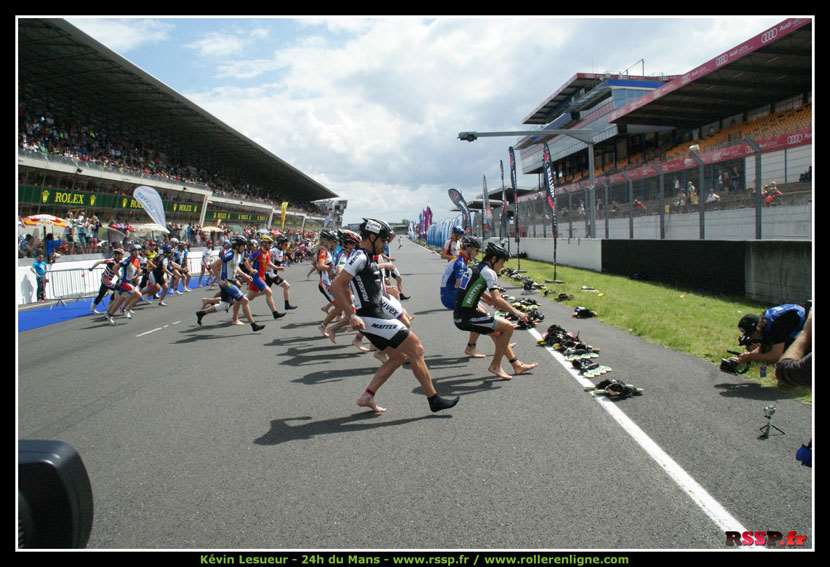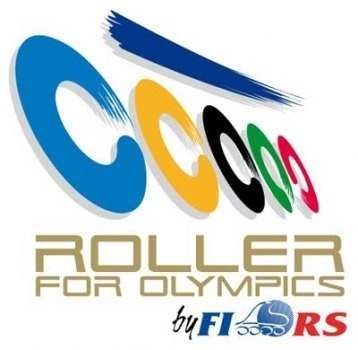The place of skating in the mass media
In order for a sport to be recognized by the general public, it irremediably has to be broadcasted by all possible means of coverage: radio, television, written press, the Internet. Skating, just like many other olympic and non-olympic sports, tries to find its place under the media sun. Taking stock...
Par alfathor
The place of skating in the mass media
An unquestionable stock taking as for television
 In France, most of the sports activity dealt with in the mass media is devoted to a few sports monopolizing the main part of the air time and the income generated by the broadcasting rights.
In France, most of the sports activity dealt with in the mass media is devoted to a few sports monopolizing the main part of the air time and the income generated by the broadcasting rights.
Here is the distribution of air times per sport on the French analog TV channels in 2004 according to the CSA (French audiovisual council):
- Fooball is logically well ahead with no less than 777 hours of broadcasting
- i.e. three times more than rugby (224 hours)
- Tennis (190 hours)
- Cycling (181 hours mainly dealing with the Tour de France)
- Basketball (171 hours)
- Golf (80 hours)
- Athletics (77 hours)
- Motor sports not including Formula 1 (74 hours)
To sum up, only 11 sports are above the bar of the 50 hours of broadcasting per year on French analog channels… And let’s not even talk about women’s sports which struggle to find their place, facing the overwhelming masculine majority.
In France, skating is limited to a few punctual broadcastings, essentially regional. Reruns of events particularly, such as Rennes sur Roulettes or the Marathon of Dijon on France 3 Channel. The 24 Hours of Le Mans had the honour of being introduced by PPDA (French news presenter) for the 20:00 edition a few years ago. The FISE of Montpellier (Festival International des Sports Extrêmes), the biggest European meeting of extreme sports, was aired on BFM in 2013. Télématin showed a few sequences of the Marathon French Cup in Strasbourg, France in 2012. On the whole, private events benefit from a bigger media exposure than more ‘institutional’ events.
If you have a closer look on cable TV channels around the world, you realize that skating has lost ground during the last years. For example between 1990 and 2000, skating had a prominent place on ESPN, especially with a great exposure for the X-Games. ESPN withdrew skating from its programming in favor of new disciplines that are more spectacular and supply more sponsors.
And what about the written press?
The stock taking is more moderate in the written press. At the national scale in France, l’Equipe Magazine regularly releases information on rink hockey, thanks to good relationships between a journalist and the rink hockey comittee. As for the other disciplines of skating, mentions are rarer. Inline Hockey, as well as speed skating, benefits from a few news flashes.
Skating mainly find its place at a local level. The French regional daily press is far richer in articles related to skating. Inline hockey is regularly echoed in lots of newspapers such as the Union/Ardennais, Sud-Ouest or La Dépêche, speed skating and rink hockey in Ouest-France, Le Télégramme and a multitude of other papers. It would seem that the links between correspondents and clubs are quite dense.
A particular case, roller derby
 For three years, roller derby has been omnipresent in the French mass media. The phenomenon started by the local press, then reached the regional and national levels. The alternative press quickly echoed that new practice mixing lifestyle, unconventional looks, and sport.
For three years, roller derby has been omnipresent in the French mass media. The phenomenon started by the local press, then reached the regional and national levels. The alternative press quickly echoed that new practice mixing lifestyle, unconventional looks, and sport.
As often in the mass media, the snowball effect did the job. Reports started invading local TV channels, then came the turn of big TV channels to present derby with TF1 and M6.
Why roller derby and not another discipline? Answers are multiple and probably incomplete. First of all, roller derby is a militant practice, another image of woman and feminism, it conveys DIY values, punk-rock looks, a set of elements offering an easy catcher to the mass media. By the way, few articles have actually gone to the bottom of the subject. Most articles make do with skimming through that social fact. Derby would not have been a skating practice, it would probably have known the same echoing.
Should we be pessimistic about skating?
The erosion of TV audiences
The horizon is not totally dark either. Recent studies show that home TVs suffer from a growing loss of interest in favor of computers, tablets and mobile phones, especially for teenagers and young people. Thus, the Internet takes a growing place in the broadcasting of sports media.
The broadcasting channels of television are getting reorganized
While the use of analog channels stumbles in favor of the TNT, while satellite and cable stagnate, the ADSL but most of all mobile phones shoot up in the consumption habits of TV viewers. 46 millions of people may watch television on their mobiles in 2015, according to a study of NPA Conseil and Le Monde Magazine.
The constant growth of videos on the Internet
 In order to get a general idea of the importance of videos on the Internet, just take a look at the figures of Youtube, the leader in the sector:
In order to get a general idea of the importance of videos on the Internet, just take a look at the figures of Youtube, the leader in the sector:
- More than 4 billions of videos are viewed each day, i.e. an increase of 50% compared to 2010.
- More than 60 hours of video are uploaded each minute, i.e. an increase of 37% in the last six months.
- More than 400 millions of views on mobile devices are censused each day, i.e. three times more than last year.
- Youtube counts between 800 millions and 1 billion of visitors each month.
Let’s say that the Internet is a real counter-power facing the diktat of its televisual ‘ancestor’. The Internet has the advantage of enabling less production costs but, above all, of offering free promotional and broadcasting channels! Anybody can create a buzz with few means and benefit from a huge audience, thanks to the virality of their production.
The sports ignored by television take charge of their own communication
For want of air time, lots of sports have become autonomous. They got organized to create their own contents and release them on the Internet.
Skating is part of those sports with a growing number of event coverages, either live or pre-recorded. Let’s mention the Trophy of the 3 Tracks which invests close to 10.000€ for its coverage each year. More recently, the Final Four of rink hockey set up a live coverage for the whole two days of competition, just like the Final Four of inline hockey at the Halle Carpentier (Paris, France).
The main competitions, like the European championships of artistic skating or the World Championships of speed skating, all have had their live coverages. Several TV channels have realized the stakes of being active on the Internet. There are more and more specialized websites of videos on demand to view your favorite TV shows after their broadcasting. Very early, roller derby organized websites specialized in the coverage of bouts on the Internet. The biggest websites are probably Derby News Network and Roller Derby UK.
What about the image of skating in other countries?
Let’s get out of France and take an interest in the place of skating in other countries. Close to France, the latin countries make much more room for skating. Italy, Spain or Portugal are fond of rink hockey and artistic skating, which would be unthinkable in France! Also in Italy, speed skating arouses the interest of the big national TV channels. In South America, skating is part of the big sports, with rink hockey in Argentina, speed skating in Columbia, and let’s not forget artistic skating.
In the Netherlands, rollerskating gets in the stream of its elder sibling, ice skating, to gather a bit of media exposure. The fact that lots of ice skaters are rollerskate renegades today helps for the recognition of our sport.
Does skating has the weapons to gain in audience?
The impact of ‘cases’ in major sports
Would one sport’s loss be another sport’s gain? Can we hope to see sports stained by scandals lose their places in the sun in favor of less mediatised practices? Not so sure! Football suffered many corruption cases these last years and cycling has known the plague of doping for dozens of years without their audiences significantly dropping. Handball was recently shaken by the Paris cases without the image of the sport really suffering from them.
Lauching the vertuous circle of media coverage
Like many other disciplines, skating has to manage to put the vertuous circle of media coverage in action: visibility = partners = financial means = production of quality images = broadcasting of images = partners…
The Internet could well enable skating to arise at a media level. The success of the first Evian Water advert with the skating babies shows that skating is deeply anchored in the collective unconscious. By the way, rollerskaters are often staged in adverts. Let’s then conclude that we are half-way.
Knowing how to attract and, above all, keep one’s partners
The growth and the recognition of skating has to go through a professionalization process. In the early 2000’s, we had big sponsors, in particular on the Marathon World Cup, the World Inline Cup with Kia, Saab and others. Should we be able to keep them in ensuring satisfying media coverage!
Having a professional approach
 Too many times, amateurishness in the organization of international competitions has been detrimental to our practice. A world championship should not rely on improvisation, a mistake we witnessed too many times lately.
Too many times, amateurishness in the organization of international competitions has been detrimental to our practice. A world championship should not rely on improvisation, a mistake we witnessed too many times lately.
The organizators’ amateurishness is one thing, but that of the skaters is another problem. When the skateboarders knew how to see their practice as a real sport, too few aggressive skaters followed the lifestyle of high-level sportsmen. Some behaviours explain why skating is not present anymore in the X-Games and why it steps backwards in the FISE. Athletes should be exemplary, whatever their disciplines. They should also be able to produce and manage their own image, their career.
Skating should accentuate its efforts in the production of qualitative images. Supplying quality videos to the mass media definitely makes their broadcasting easier. With such a visual basis and with an elaborate sales talk, a good professional communicator, pervaded by a strong cross-disciplinary culture, can seek out big partners. And if you add a few champions or charismatic individualities on which you can lean, the doors may open even more. It belongs to us to draw on our existing ressources and offer skating the place it deserves.
Skating is not the only one in the running
A stronger appearance in the mass media would also enable to legitimate the application of skating for the Olympics. Skating will soon have to face young and emerging disciplines in which the IOC is more and more interested, for the simple reason that the youth give the cold shoulder to the Olympics. The IOC is looking for a supplementary audience, with partners included. The arrival of snowboarding and BMX is only a prelude to that opening. Despite all its intrinsic qualities, skating will never enter the olympic sphere without a sponsor of international scope. Supplying a sponsor will remain an indispensable condition for its admission into the olympic program.
Links
Translation: Chloé Seyres
Photos: ReL, FIRS, All rights reserved
